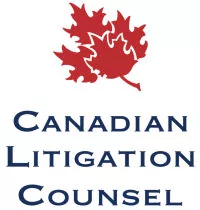Background
The Alberta Court of Appeal ("ABCA") recently provided a beneficial review of the law of indemnification and the duty to defend in Alberta. Unfortunately, the ABCA passed up the opportunity to rule on whether the presence of a save harmless clause in a commercial agreement could give rise to a duty to defend.
In Kostic,1 the Piikani Nation received a payment of approximately $64 million from the Alberta government relating to the settlement of various land and water disputes. The funds were put in a trust as per the trust agreement. The trust agreement delegated CIBC as the trustee and vested investment management responsibility with Raymond James.
CIBC opened various accounts with Raymond James which involved various account agreements (collectively, the "Account Agreement"). The Account Agreement was a commercial agreement which contained a clause that required CIBC to "indemnify and save harmless" Raymond James.
Ms. Kostic was an employee of Raymond James who was named as the investment advisor by Piikani Nation. However, in 2006, Piikani Nation commenced legal action against Raymond James and Ms. Kostic (and many others) alleging negligence, breach of fiduciary duty, conspiracy and breach of the trust agreement.
The issue was whether the Account Agreement required CIBC to provide indemnification and/or a defence to Ms. Kostic.
Indemnification
Our initial gut reaction when we see an indemnification clause is to go after the indemnifier (i.e. the individual who reimburses the indemnified for the loss). However, being sued does not automatically mean you have suffered a loss. Further, it is not always clear how the loss is to be quantified until the end of the legal action. Each indemnification clause must be scrutinized in its entirety.
In Kostic, the ABCA held that it could not decide whether CIBC was obligated to indemnify Ms. Kostic for any losses as a result of the 2006 legal action until the allegations had been adjudicated. Although Ms. Kostic had been sued, she had not suffered the necessary losses which would have triggered indemnification under the Account Agreement. The ABCA stated, "The Duty to indemnify arises after the loss has been quantified".2 The nature of a contract of indemnity is that it is a reimbursement obligation for an amount of damages that are actually suffered by the indemnified.
Duty to Defend
The duty to defend typically arises at the beginning of an action when the facts alleged in the pleadings, if proven to be true, would require the insurer to indemnify the insured for the claim. The duty defend is substantially broader than indemnification and typically arises in the insurance context between insureds and insurers.
However, the Account Agreement was a commercial agreement. Courts in Alberta have yet to address if a save harmless clause in a commercial agreement gives rise to a duty to defend. Unfortunately, the ABCA passed up on the opportunity here to comment on this issue and stated:
Whether, and if so, in what circumstances, a "save harmless" clause in a commercial agreement gives rise to a duty to defend has yet to be addressed by this Court. However, it need not be determined to decide this appeal. Even if such a duty might arise in some circumstances under Alberta law, no such duty exists in this case for the reasons outlined below.3
Therefore, it appears that it will remain unclear if the duty to defend is extended beyond the insurance context to commercial agreements in Alberta.
That said, the ABCA confirmed how to determine if a duty to defend exists (commonly referred to as the "Pleadings Rule"), "...the task of a judge when determining to impose a duty to defend is to carefully examine the pleadings in the action against the party seeking to claim such costs, the documents referred to in the pleadings and the insurance policy to determine whether the claims in the pleadings, if proven would fall within the coverage of the insurance policy."4 Therefore, an insurer should examine:
- the pleadings;
- the documents referred to in the pleadings; and
- the insurance policy.
Despite the ABCA's refusal to give clarity to the issue on whether the duty to defend can arise from a commercial agreement, it went through the standard analysis and found that the duty to defend did not arise from the Account Agreement anyways.
The ABCA found that the pleadings did not allege facts that would give rise to a duty to defend. Specifically, the save harmless clause in the Agreement was predicated on if trading authorizations had been given or if a joint account had been opened in which both Piikani Nation and CIBC could deal. These were highly disputed matters and were not alleged in the Amended Statement of Claim.
Further, the ABCA held that although the duty to defend is broader than indemnification, it still cannot violate the "trial within a trial" rule. Ms. Kostic's claim for defence costs required the determination of "numerous highly contest facts which will be at issue at the trial in the 2006 Action".5 In order to conclude that a duty to defend existed, the ABCA would have had to decide contentious facts (i.e. if trading authorizations had been given) that would have affected the underlying action.
Final Remarks
Kostic serves as a good reminder of the complexities involved in determining if a duty to defend and indemnification exists. Unfortunately, the ABCA did not rule on the issue of whether the duty to defend arises from commercial agreements as it found that the pleadings from the 2006 Action did not give rise to the duty to defend. Therefore, the ABCA did not have to decide the issue.
Further, although the duty to defend is broader than indemnification, it still must meet the requirements of the Pleadings Rule and not violate the "trial within a trial" rule. Unfortunately for Ms. Kostic, she will have to wait until the conclusion of the 2006 Action to know if she will be indemnified.
Footnotes
- Kostic 2018 ABCA 355 [Kostic].
- Ibid at para 17.
- Kostic at para 23.
- Ibid at para 26.
- Ibid at para 31.
* * *
Brownlee LLP is a member of the Canadian Litigation Counsel, a nationwide affiliation of independent law firms .
The content of this article is intended to provide a general guide to the subject matter. Specialist advice should be sought about your specific circumstances.

